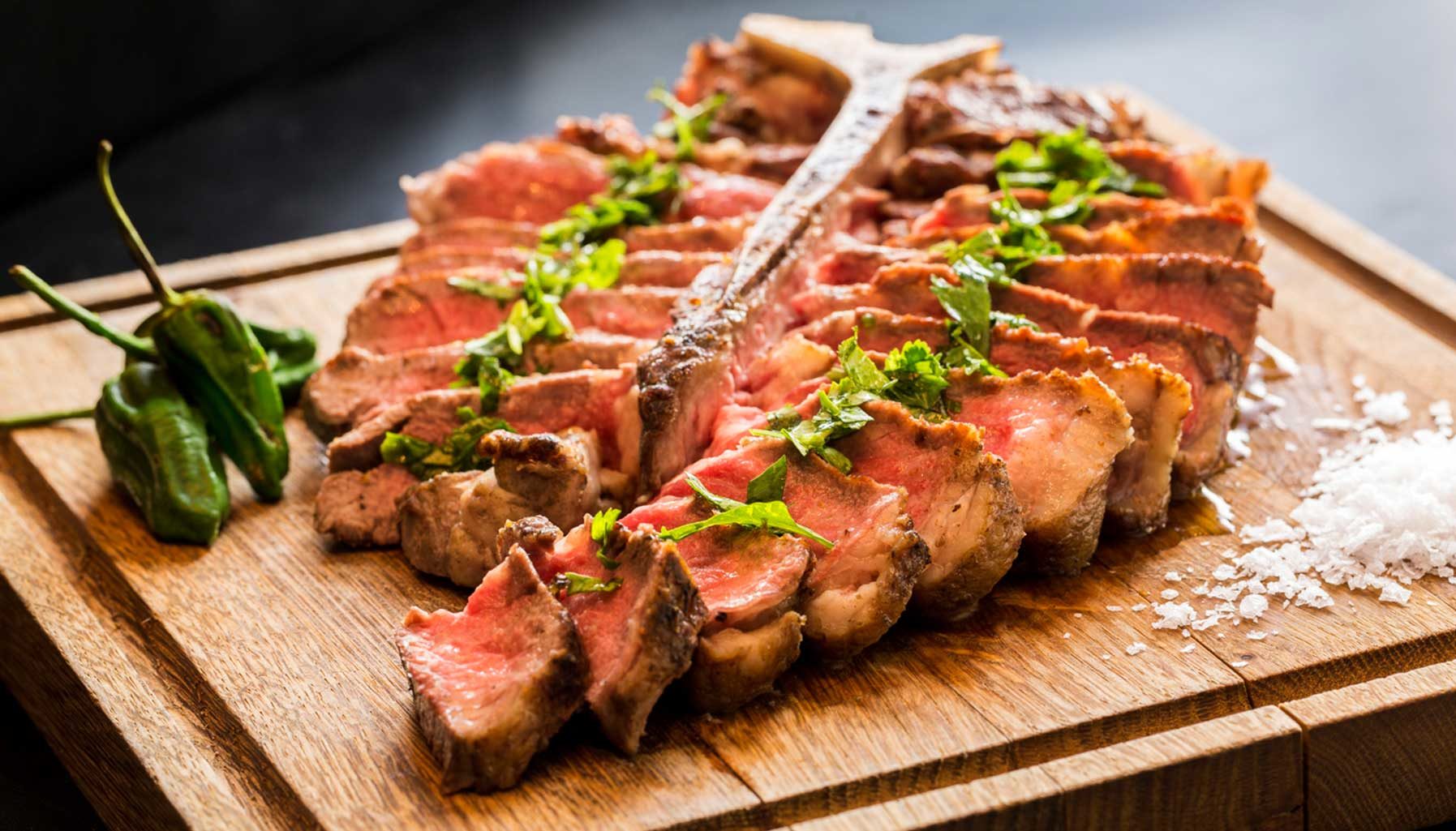- No products in the basket.
The World’s Most Prized Meats
Nothing in this world is created equal. Just as you would head to London’s Savile Row for impeccable tailoring, or to Myanmar for the finest rubies, or to Switzerland for flawless horology, there are ingredients out there that stand head and shoulders above the rest. Be careful what you put in your mouth; once you have a taste of these prized, premium meats, it will be difficult to imagine a meal without.
1. Chicken – Bresse Chicken
From: Bourg-en-Bresse, France
A staple of menus worldwide, chickens are the domesticated subspecies of the red junglefowl, native to South-East Asia and first farmed as poultry as early as 10,000 years ago. Such a long history has given humanity plenty of time to selectively breed the bird for flavour – see the jet-black meat of the fluffy Silkie chicken or the thunder thighs of Dong Tao chickens, whose delicious meat was once the sole delight of Vietnamese kings. But most chefs would agree that were they to serve chicken, it would be the meat of the Bresse chicken. The only chicken in the world to be protected by a European Apellation d’Origine Controlée (AOC), the breed has been reared here since Roman times. Food writer Alan Davidson calls poulet de Bresse ‘the aristocrat of modern table poultry’ and one only has to take a bite – a bite of deep flavour and succulent texture – to appreciate how correct Davidson is.
2. Pork - Mangalitsa Pork
From: Hungary
As ubiquitous as chicken is, it is only the second most-consumed meat in the world. The first is still pork, domesticated from 13,000 BC in the Levant. Such a long history has given rise to a cornucopia of delicacies – Jamon Iberico de Bellota, Culatello di Zibello, Japanese kurobuta pork – and now an old favourite is finding favour again. Hailing from Hungary, the fluffy Mangalitsa pig has been described as the ‘Kobe beef of pork’, sharing with the exalted beef the same sort of fatty marbled texture that causes salivation. Modern farming has pushed pigs to be bred leaner, but the free-range Mangalitsa embraces its fatty marbling. Its creamy taste is a revelation, and one the world almost lost out on. After the collapse of the Austro-Hungarian Empire in World War I, the breed slowly disappeared, accelerated when communism in Romania and Hungary took over. Extinction seemed certain until the 1990s, when a Hungarian breeder revived the population, for which our stomachs are very thankful.
3. Duck – Liberty Duck
From: Denmark, USA
The duck that most of the world eats is Pekin duck, originally bred in China as the domesticated form of the mallard then introduced to Long Island, New York. Pekin duck, not to be confused with the Peking Duck dish, is popular for its mild flavour, light meat and a good layer of fat that makes it perfect for roasting. Other purists disagree: preferring the deep, less fatty, almost gamey flesh of the Muscovy duck that is almost comparable to beef in flavour and veal in texture, or the Moulard, a Muscovy-Pekin hybrid that is the best of both worlds and also France’s preferred duck for foie gras and magret de canard. There’s a case for all three, but we particularly like the Liberty Duck, a strain of Pekin duck originally developed in Denmark and now mainly associated with breeder Sonoma County Poultry in California. Harkening back to a slow, less stressful style of rearing, Liberty Ducks reach the market at 9 weeks age rather than six for other birds, packing a luscious meatier flavour into a larger frame that is all the rage on both sides of the American coast.
4. Lamb – Salt Marsh Lamb
From: Wales, United Kingdom; Normandy, France
The French call this meat l’agneau de pré-salé, referring to lamb raised in salt marsh meadows whose grasses have a high salinity and iodine, given the meat a distinctive, delicious taste. Roaming the seaside pastures of Cumbria and Lanchashire in England, as well as the Gower Peninsular in Wales and Mont Saint-Michel and the Bay of the Somme in France gives the animals plenty of exercise, making the meat lean, while their mineral-rich diet of sea purslane and sparta grasses gives the meat a deeper, denser, darker and sweeter flavour that is a favourite of Gordon Ramsay and Rick Stein. In season from late June to October in Europe, this lamb is best served with accompaniments that evoke the same tidal, coastal notes – samphire, sea kale – of its terroir. Salt malt lamb is a rarity even in London or Paris; most of it is consumed in its locality so the best way to sample it is to head straight to the source.
5. Beef – Matsuzaka Beef
From: Mie, Japan
Sometimes it seems that everyone in the world has heard of Kobe Beef, the legendary beef that melts in the mouth from bovines that have been massaged and fed beer (an exaggeration, it appears). But as exalted as Kobe Beef is, there is another. Kobe is only one of a trio – the Sandai Wagyu (‘Three Big Beefs’) of Japan – Ohmi from the Shiga Prefecture, Matsuzaka from the Mie Prefecture and Kobe from, well, Kobe. Of the three, Matsuzaka is actually more prized in Japan, owing to its densely marbled texture as tender as butter that still retains a ‘beefy’ flavour. Matsuzaka tastes richer and hardier than the more subtle Kobe, possibly because Kobe comes from steers while Matsuzaka only comes from virgin females. Prices for Matsuzaka are sky high as supply is low; top-grade Matsuzaka is limited to only 2,500 cows a year and rarely ever appears outside of Japan. Of course comparing the three Sandai Wagyu is like splitting hairs – each is still a mind-altering example of the finest beef – but if we had to choose our last meal, we’d go for Matsuzaka.













